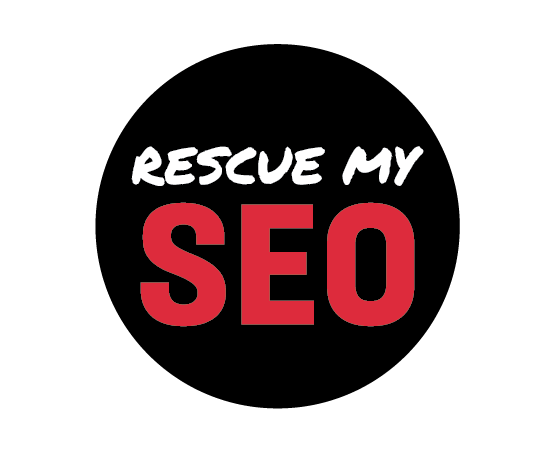
If your search traffic or Google rankings just took a nosedive after the latest Google Core Update, you’re not alone—and you’re not powerless. In 2025, these broad updates have become more sophisticated and disruptive to small business sites, with a sharpened focus on authentic, useful content and local engagement. At Rescue My SEO, we’ve helped small businesses recover from Google algorithm shake-ups by digging in, diagnosing the real issues, and rebuilding a foundation for long-term search growth. This is our practical, honest, and actionable survival guide for small business owners who want to bounce back, stronger.
What’s Really Changed? Key Takeaways from Recent Google Core Updates
- Depth and Originality Matter: Search now favors sites that thoroughly answer user questions and display genuine expertise, especially at the local level.
- Thin or Outdated Content Gets Hit: Pages rehashing generic info or lacking fresh updates drop quickest.
- Mobile and UX Signals Are Critical: Slow, clunky, or hard-to-navigate mobile sites lose ground.
- Local Relevance and Authority: Your Google Business Profile, reviews, and NAP (name, address, phone) consistency carry more weight than ever.
- Structured Data and AI-Friendliness: Clean schema and direct answers help with new AI-driven search features and rich results.
1. Pause—And Don’t Panic
Fluctuations are normal in the first weeks after a core update. Wait until the update is finished (often 2–3 weeks) before making major changes so you don’t accidentally undo progress or chase temporary ranking swings.
2. Diagnose the Real Problem (Not Just the Symptoms)
- Pinpoint Patterns: Use Google Search Console and Analytics to see which pages, keywords, or sections lost visibility. Is it only your service pages? Blog posts? Location-specific content?
- Segment Your Data: Compare drops for desktop and mobile. Check which cities/neighborhoods declined most if you serve multiple local markets. This helps you home in on what Google’s update hit hardest.
For step-by-step guidance on running your own diagnostics, check our post on How to Run a Local SEO Audit: Step-by-Step Guide for Small Businesses in 2025.
3. Audit Content Quality and Relevance
Google’s updated algorithms demand that every page “earns” its place in search results with true usefulness. Ask yourself for each major page:
- Does it fully answer the searcher’s intent with real details, step-by-step advice, or actionable info?
- Is it unique and more insightful than similar pages from competitors?
- Was it updated in the past year?
- Does it include local context—like references to your city, service area, or neighborhood?
- Are you showing your expertise? (E.g., by including team bios, years in business, relevant credentials, awards, or customer reviews.)
Action: For pages that fall short, prioritize:
- Rewrite and Expand: Add missing detail, up-to-date stats, and local info.
- Remove or Combine: Eliminate thin pages or merge duplicate/overlapping content.
For deeper tips, see our guide Does Blogging Help Small Business SEO? How to Get Real Results From Content.
4. Elevate Your Local SEO Signals
- Google Business Profile: Make sure your listing is filled out, verified, and features up-to-date photos, business hours, services, and categories. Encourage recent customer reviews.
- Local Citations & NAP Consistency: Your business name, address, and phone number must be identical on your site, directories, and Google. Inconsistencies damage trust and rankings.
- Unique Location Pages: If you serve multiple areas, create dedicated landing pages for each, with distinct local content, reviews, and maps.
Multi-location business? Review our guide on building a local SEO strategy for multiple locations without duplicate content issues for best practices.
5. Fix Technical SEO and Page Experience
- Test Mobile-Friendliness: Run your site through Google’s Mobile-Friendly Test. Address any errors right away.
- Speed Up Your Site: Aim for load times under 2.5 seconds on mobile. Compress images and streamline code.
- Check for Broken Links & Errors: Clean up old links or 404s. Fix redirect chains. Update your sitemap if necessary.
- Enhance Accessibility: Use proper heading structure (H1/H2), alt text on images, and logical navigation.
We see many small business sites stumble on technical basics that are easy to fix. Our Technical SEO Checklist for Small Business Websites covers the most commonly missed issues.
6. Refresh, Consolidate, and Elevate Old Content
- Update Old Posts and Pages: Add new data, reflect current answers to customer questions, and show your business is active and engaged.
- Merge Low-Performers: Turn several weak, similar posts into one strong, comprehensive guide.
- Use Structured Data: Implement schema (e.g., FAQPage, LocalBusiness, Product) to help Google and new AI search tools understand and showcase your content.
7. Audit Your Backlinks—Then Build New, Quality Ones
- Remove Spammy Links: Disavow links from questionable directories or irrelevant sites.
- Rebuild Authority: Reach out to local news, business associations, or partners to earn new citations and backlinks. Offer to share helpful advice or sponsor community initiatives for coverage.
8. Reassess Your Pages’ Intent and Structure for AI Search
- Directly Answer Questions: For every important service or FAQ page, put a clear, concise answer at the top—this helps with Google’s new AI-driven summaries and voice search results.
- Organize Headings Logically: Use H2 and H3 tags for different topics and include target keywords naturally.
- Add FAQ Sections: Better matches user intent and increases your changes for rich snippets.
Want practical examples? Browse our post on SEO Content Writing Services: How to Create Blog Posts That Actually Drive Local Leads to see how we integrate intent, structure, and value.
9. Monitor, Measure, and Adapt—Consistently
- Track Monthly Benchmarks: Set concrete goals for traffic and rankings recovery. Note where you’re improving and where gaps remain.
- Stay in Tune with Google: Core updates usually come several times per year. Make site audits and content refreshes a habit, not a panic-driven reaction.
- Be Patient, Stay Focused: Most recoveries take several months, but consistent improvement is the #1 sign your efforts are working.
10. Get Help When Needed—But Choose Carefully
If you’re feeling overwhelmed or aren’t sure where to start, look for SEO agencies or consultants that:
- Specialize in small business and local SEO
- Offer transparent reporting and a data-driven approach
- Help you understand the real causes behind ranking changes, not just push new keywords
- Provide custom advice—not one-size-fits-all tactics
For those seeking expert guidance, our SEO consulting services are tailored for small businesses—designed to build a resilient, long-term search strategy after an algorithm hit.
Frequently Asked Questions
How long does it take to recover after a Google Core Update?
Small improvements can show up in 1–2 months, but full recovery from significant drops often takes 3–6 months or longer. Fast, focused action—especially refreshing content and fixing technical issues—often speeds this up. If you’re in a highly competitive local market, patience and persistence are key.
Should I remove low-performing pages or just improve them?
If a page is outdated, too thin, or not useful for users (and not attracting organic or referral traffic), consider removing or redirecting it. Otherwise, focus on expanding, updating, and differentiating your content. Quality trumps quantity after Google’s latest update.
How do I know if the update targeted backlinks or content?
Most recent updates have focused primarily on content quality and user engagement—however, if your organic rankings dropped most for pages with a history of questionable links, check your backlink profile carefully and disavow anything that looks spammy or paid.
Final Thought: Take Action Now—And Build for the Future
The latest Google Core Update signals a push toward trust, expertise, and true local engagement. While losing traffic hurts, it’s also a chance to rebuild your online presence on a firmer, future-proof foundation. Start with data, put your users’ needs first, and don’t wait for the next update to shore up your site.
If you want a personalized roadmap or support implementing these strategies, Rescue My SEO can help you diagnose, rebuild, and future-proof your rankings—whether you’ve suffered a minor setback or a major crash. Small business recovery is our specialty; let’s work together to get you back on top.



